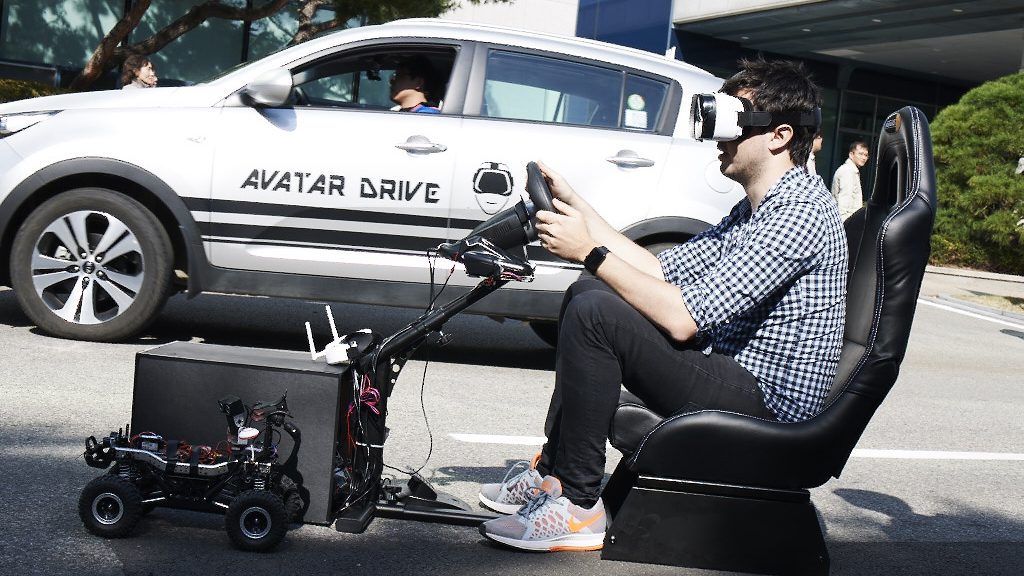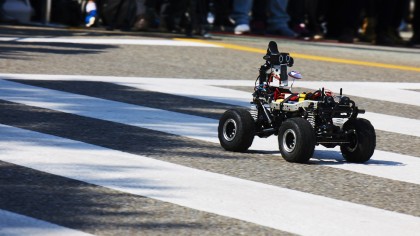I used virtual reality to take control of someone else's car - while they were in it
And no one got hurt

Sat outside in a gaming chair with a knockoff Samsung Gear VR on my head and my fingers wrapped around what looks like a Mad Catz steering wheel, I'm like a prototype for what we'll all be doing in five years' time when virtual reality is the norm.
I'm actually driving a real, fully working car, and there's a possibility I could cause a LOT of damage.
From my remote station I can accelerate, brake and steer the car, which is just metres away, in real time, while an in-car camera sends my headset a live feed of the driver's view. As I move my head, the camera moves with me, letting me have a full "cockpit view". There's someone sat in the driving seat but he remains sedentary while the steering wheel moves under my control.
Avatar Drive is just one of many concepts being displayed at Hyundai's IDEA Festival in South Korea. The festival has been running for six years now, and is used to showcase ideas from the brains of Hyundai's employees. Avatar Drive, the one I'm currently partaking in, is particularly impressive.
The conversation around automotive transport, particularly in ever-urbanising cities, is changing. We're now talking about "Uberisation", sharing economies and autonomous vehicles. Avatar Drive is another proposal in the grand shake-up.
What if you could drive a car remotely? Say a friend was over the alcohol limit, what if you could drive their car home for them without having to leave your own home? Or perhaps a rental services delivers a car to your door without anyone in it? Remote driving feels like a logical half-way place between manual cars and totally autonomous vehicles.
Press Start to drive

That said, the Avatar Drive is designed to have a fully self-driving mode too, but this was far from ready to be played with on a campus filled with hundreds of people.
Sign up for breaking news, reviews, opinion, top tech deals, and more.
Even the manual "takeover" mode needs a lot of work. There was a bit of latency in turning when I tried it, and the connection stopped working on more than one occasion - problems that you don't want to hear about when you're dealing with road safety. One of the creators told me that the driver can take control at any time, so at least the possibility of one of these being hacked shouldn't pose a concern.
Other people have looked at remote cars, but Avatar Drive is unique because the controller module could theoretically be placed in any commercial car and work the same way.
The team said the concept could feasibly come to market within five years time. "4G is not being considered for automotive use," one representative told us. However, South Korea is developing 5G - and fast - with an aim to have it commercially available by the end of the decade. The roads of 2020 could be a very strange place indeed.

Hugh Langley is the ex-News Editor of TechRadar. He had written for many magazines and websites including Business Insider, The Telegraph, IGN, Gizmodo, Entrepreneur Magazine, WIRED (UK), TrustedReviews, Business Insider Australia, Business Insider India, Business Insider Singapore, Wareable, The Ambient and more.
Hugh is now a correspondent at Business Insider covering Google and Alphabet, and has the unfortunate distinction of accidentally linking the TechRadar homepage to a rival publication.